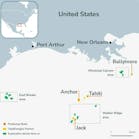R&W INSURANCE COULD PROTECT BUYERS AND MAXIMIZE CASH FOR DISTRESSED SELLERS IN M&A DEALS
ROXANNE ALMARAZ, BRACEWELL LLP, HOUSTON
DAVID RAIN, CROW HOLDINGS CAPITAL, DALLAS
ERIC ZIFF, AON TRANSACTION SOLUTIONS, NEW YORK CITY
REPRESENTATIONS and warrantiesinsurance (R&W) allows the buyer and seller in M&A transactions to allocate risk relating to breaches of representations and warranties to an insurer for a fixed premium. R&W insurance generally does not change how the representations and warranties themselves are negotiated, nor does it typically impact the relevant indemnification provisions. Instead, in a buyer side policy, the carrier providing the R&W insurance, either in conjunction with, or instead of, the seller, will make the buyer whole if there is a breach of the seller's representations and warranties.
From the buyer's perspective, this may be preferable, as a buyer may feel more comfortable with its ability to recover its losses from a major insurance provider than from, for example, a seller selling the bulk of its assets. Sellers may also prefer R&W insurance because it can provide a much cleaner exit. R&W insurance bridges the gap between a buyer's desire to have meaningful post-closing credit support and a seller's desire to receive all sales proceeds for immediate distribution to its equity owners.
Under an R&W insurance policy, either the buyer or the seller can be named the insured, although buyer-insured policies are more common. The insured party is the party that will receive the payout from the insurance carrier if a breach occurs. The insured party also bears the burden of proving to the carrier that a breach has occurred.
In a buyer-insured policy the carrier interfaces directly with the buyer and assumes primary liability for any breaches of the representations and warranties that are covered by the insurance policy. In contrast, in a seller-insured policy, the seller is primarily liable to the buyer for any breaches and the insurance serves as a backstop for any indemnification claims made by the buyer.
The seller is forced to first make the buyer whole and then turn to the carrier for coverage.
R&W insurance coverage is typically blanket and endeavors to cover the entire suite of representations and warranties set forth in the purchase agreement. However, carriers typically will not extend coverage to breaches of representations or warranties that they believe to be off market or that they believe to be covenants masquerading as representations or warranties. For example, a representation regarding future performance of the target will be excluded as it may properly be construed as a guaranty of future performance more akin to a covenant.
There are also certain issues that will almost never be covered by an R&W insurance policy. These include matters actually known to the "deal team" or disclosed on the disclosure schedules, forward looking statements, covenants, and working capital adjustments. Further, risks that are better addressed by other targeted insurance products are frequently carved out of R&W insurance policies where that type of risk is central to the underlying transaction. This may include, for example, environmental exposure in an upstream oil and gas deal where the expectation is that the target will have a pollution legal liability policy in place.
Finally, risks that are subjective or difficult to verify are typically excluded. For example, a representation as to the adequacy of reserves in an upstream M&A deal or the collectability of accounts receivable may be excluded.
Current premiums for R&W insurance are roughly 3-4% of the policy size. In addition to the premium, most carriers engage outside counsel to analyze the transaction at a fixed cost, normally $25,000 to $50,000, regardless of the transaction size.
While R&W insurance will cover most of the risk of a breach, the carriers still want the participants to bear some risk. Most carriers insist upon a minimum retention level - i.e., the insured's deductible under the policy. The retention can be split between the seller, normally through an escrow/indemnity obligation, and the buyer, through a non-tipping basket or a true deductible. As a rule of thumb, carriers will not agree to retentions lower than 1%-1.5% of the purchase price. On smaller deals, this rule of thumb does not hold true as carriers generally do not view 1% of the purchase price for a small deal as sufficient (in an absolute dollar sense), instead requiring a retention amount at least in the mid-six figures. As a result, M&A participants' real appetite for R&W insurance begins with deals of $50 million or greater, where, e.g., a $750,000 deductible would be 1.5% of the purchase price.
R&W insurance policies generally last longer than traditional indemnity obligations or escrow accounts, at least as it relates to breaches of non-fundamental representations. Most R&W insurance policies provide coverage for three years for non-fundamental representations and six years for fundamental and tax representations. Traditional indemnity obligations in the current seller-friendly environment may only provide coverage for non-fundamental representations, for example, for 6 to 18 months. An escrow account typically will only last for so long as the non-fundamental representations survive.
A typical process for obtaining R&W insurance (from quoting to underwriting) takes 10 to 14 days in total. The goal of all parties is to be ready to bind coverage concurrent with the signing of the purchase agreement. The initial phase of the underwriting process for a buyer-insured policy starts when the buyer approaches a broker in order to get quotes from different carriers for the transaction.
In order to get quotes, the broker will need the draft of the purchase agreement, the management presentation (usually available where an investment bank has been engaged to run the process), and the financial statements of the target. With that information in hand, the broker can typically get quotes from carriers in 3 to 4 business days. These quotes will provide information on retention and pricing and the definition of certain important terms such as "loss."
If the seller is requiring bidders in an auction process to obtain R&W insurance, the seller will typically present quotes to the buyers at the beginning of the auction. The quotes will be sanitized so that there is no hint as to the seller's view of its enterprise value. Buyers will then reach out to the broker who initiated the quoting process to get quotes that are tailored to their risk appetite. Once the individual buyers have quotes, they bake them into their projected purchase price and into their purchase agreement markups.
Once a bidder has exclusivity, such bidder will enter into negotiations with a carrier. The bidder will pay an underwriting fee for the carrier to bring in outside counsel, as described above. Within 4 to 5 days of the provision of the due diligence materials to the carrier, the broker, the bidder, the carrier, and their respective counsel and other advisors will have an underwriting call where the carrier can ask high level questions about the bidder's investment thesis and why the bidder wants R&W insurance. The carrier will then focus on specific items flagged by the carrier's counsel in connection with counsel's review of due diligence materials.
After the underwriting call, a draft of the policy, with any deal-specific exclusions articulated, is provided to the bidder and the broker. The broker will negotiate over the next day or two with the carrier over this first draft of the policy. A seller insured process that runs concurrently with an auction or bilateral process works in the same way as a buyer insured process. Often, however, a seller will approach a broker for R&W insurance after the transaction has been signed or even closed. In this case, the buyer will not be involved because whatever policy is eventually negotiated will be between the seller and the carrier and will not affect a buyer.
Even where a carrier prices the quote based upon an initial draft of the purchase agreement, the pricing and retention typically do not change as the purchase agreement is negotiated. As long as the purchase agreement stays in roughly the same form (subject to typical evolutions of a draft purchase agreement), the carriers will generally stick to the terms quoted to the insured in the first phase of the underwriting process. If something moves too far off market, the carrier may elect to exclude the subject representation or read such representation differently for purposes of the policy.
Insurers generally will not pay out in respect of consequential, special, or indirect damages. The insured party and its broker may, however, negotiate that the insurer may pay out for multiple damages. Multiple damages are particularly relevant in transactions where the target's value is based off an EBITDA, or some other financial metric, multiple. Where a target has been so valued, and a seller provides inaccurate financial statements, thereby breaching its financial statements representation, a policy that includes multiples damages can help make the buyer whole for the damages caused by the incorrect financial statements and resulting purchase price.
One concern about R&W insurance is that carriers will not pay out on policies. There are limited published figures about resolution of such claims (and, in our experience, insurers are reluctant to provide information regarding claims history, even upon request). However, a representative of AIG advises that AIG alone recently paid out over $100 million in a single year and anecdotal evidence suggests that so far insurance carriers have generally paid out on valid claims.
R&W insurance has historically not been a popular product in the energy industry. In oil and gas M&A deals in particular, two of the main risks for a buyer relate to title and environmental matters. Sellers and buyers typically agree to a title defect mechanism (as opposed to title representations by the seller) and, as a result, title matters in the oil and gas context do not tend to come within the scope of an R&W insurance policy. Environmental representations are frequently covered by other, standalone environmental policies, and carriers normally exclude from R&W insurance policies the first losses covered by other insurance policies (often, R&W insurance carriers will allow their policies to serve as excess coverage assuming that such underlying insurance is of an appropriate scope and has sufficient limits).
Sophisticated parties understand that even the most robust of post-closing indemnification provisions are only as good as the entity standing behind it. In the absence of a creditworthy seller or some other meaningful credit support, a buyer may find itself paying its legal counsel significant fees for negotiating strong indemnification provisions, the benefit of which the buyer will never be able to realize. The vast majority of the insurers in the R&W industry are well-established companies and R&W insurance may provide another means of shifting risk away from the buyer.
A low price environment could potentially fuel the growth of R&W insurance in the energy industry. Investors specializing in distressed assets and strategic companies evaluating consolidation opportunities may very well find that R&W insurance is a useful tool in enabling deals to happen, even where a seller's wherewithal is at issue. And, viewed from the opposite direction, distressed sellers pressured to streamline their portfolios will likely be open to exploring ways to avoid placing desperately needed capital into escrow.
Private equity money has continued to flow into the energy space, and eventually these funds will need to exit their investments. R&W insurance has been very successful in other industries for private equity funds because the funds place a premium on a clean break and the ability to distribute promptly to their limited partners the sale proceeds. This same rationale applies to private equity funds in the energy space as well as in other industries.
In the coming months, with many energy companies feeling the pain, directly or indirectly, of low oil prices, there may be significant pressure to divest of underperforming assets. And companies that have historically been viewed as creditworthy may not be viewed that way by buyers approaching them in a sales process. R&W insurance could be a way to provide a buyer with adequate protection while allowing these "distressed" sellers to maximize cash proceeds at closing.
ABOUT THE AUTHORS
Roxanne T. Almaraz, a partner in Bracewell LLP's Houston office, advises clients in domestic and international mergers and acquisitions, joint ventures and other business transactions. She can be reached at [email protected].
David Rain works in the self-storage and industrial groups at Crow Holdings Capital and has been a member of the real estate team since 2016. Prior to joining Crow Holdings Capital, Rain was an associate at Bracewell LLP. He received an MBA and JD from the University of Texas in 2014 and a BA in hstory from Washington and Lee University in 2010. He can be reached at [email protected].
Eric Ziff is a senior vice president at Aon Transaction Solutions where he structures and markets insurance products that facilitate and provide risk allocation solutions for M&A and other significant corporate transactions. He can be reached at [email protected].





